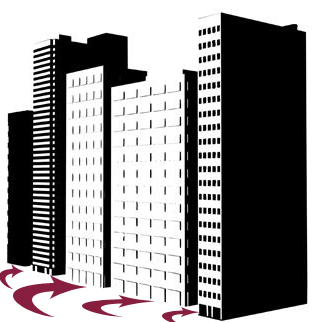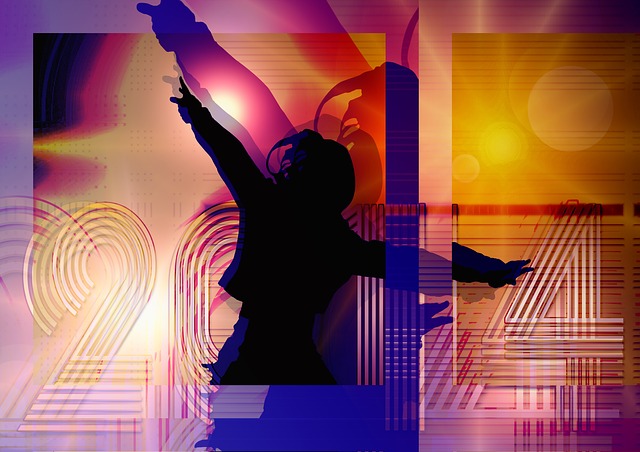The Habit Of Eating Meat May Be Hurting Us (And Our World)
![]()
THE HABIT OF EATING MEAT MAY BE HURTING US (AND OUR WORLD) (ISSUE 120)
By Diane Gold
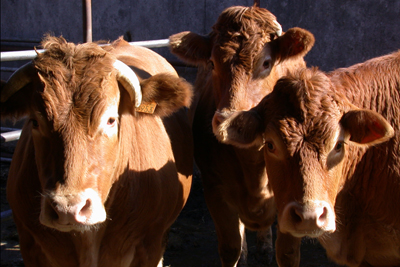 The habit of eating meat is passed down from one generation to another, in most societies. Throughout the years, a symbol of abundance has become the finest steak dinner, so much so that, at one point, the overproduction of uric acid crystals between the joints known as gout, got the nickname “disease of the rich” because wealth often meant increased intake of animal proteins.
The habit of eating meat is passed down from one generation to another, in most societies. Throughout the years, a symbol of abundance has become the finest steak dinner, so much so that, at one point, the overproduction of uric acid crystals between the joints known as gout, got the nickname “disease of the rich” because wealth often meant increased intake of animal proteins.
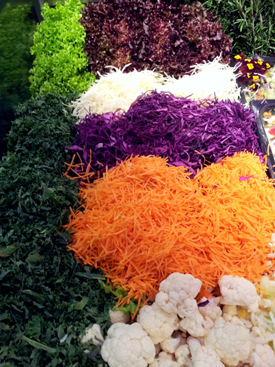 What is now becoming common knowledge, or is such to the Millenial generation and after, is that hunger and thirst could be contained if we increased our plant-based nutrition consumption; we could reduce many chronic diseases if we reduced or removed meat from our diet; our water footprint to farm livestock for food is sending the world economies on a downward spiral of water emergencies; especially in the latest generation, people are questioning whether it is ethical to eat meat (which could includes but is not limited to beef, pork, lamb, chicken, fish, bees).
What is now becoming common knowledge, or is such to the Millenial generation and after, is that hunger and thirst could be contained if we increased our plant-based nutrition consumption; we could reduce many chronic diseases if we reduced or removed meat from our diet; our water footprint to farm livestock for food is sending the world economies on a downward spiral of water emergencies; especially in the latest generation, people are questioning whether it is ethical to eat meat (which could includes but is not limited to beef, pork, lamb, chicken, fish, bees).
This article looks at this global habit in relation to agribusiness, the pharmaceutical industry and education.
HUNGER
What would happen if the money spent on livestock feed were spent on growing extra food for people who needed food?
According to PETA:
1) Using an acre of land to raise cattle for slaughter produces 20 pounds of meat. This same acre could produce 365 pounds of soybeans, 17 times more food.
2) The resource to produce 1 pound of meat would produce 13 pounds of grain. That would feed an entire community, rather than 1 family.
 3) This year, 7100 children will die from a hunger-related disease per day. That’s 2.6 million for the year. We can help hunger by replacing our meat habit with some form of plant-based nutrition.
3) This year, 7100 children will die from a hunger-related disease per day. That’s 2.6 million for the year. We can help hunger by replacing our meat habit with some form of plant-based nutrition.
HEALTH
1) ANTIBIOTICS
The use of antibiotics in livestock production has created highly resistant strains of bacteria (super bugs) which pass by touch to workers, from water supply contaminated by infected animal feces and from uncooked infected meat.
Because of the power of the food and pharmaceutical industries, the Food And Drug Administration (FDA), unlike the European Union, has never banned antibiotic use in animal production. It did, however, implement a regulation that asked the farm industry voluntarily to phase out the use of certain antibiotics.
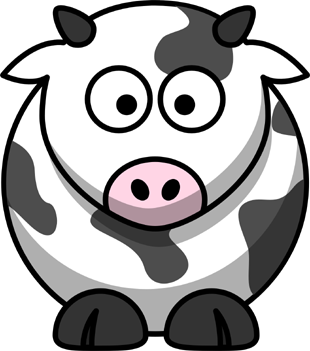 For those not calculating, if antibiotics are used in animal feed, the drug companies get paid for their drugs and farmers get to fatten up their livestock more quickly from the antibiotics so they reduce feeding expense. This translates to a less healthy environment, chemically altered food and reduced health.
For those not calculating, if antibiotics are used in animal feed, the drug companies get paid for their drugs and farmers get to fatten up their livestock more quickly from the antibiotics so they reduce feeding expense. This translates to a less healthy environment, chemically altered food and reduced health.
AUTHOR’S NOTE
It is important to note that most super bugs that affect humans are obtained from overuse of antibiotics in humans.
2) PLANT-BASED NUTRITION
There is much evidence that plant-based eating reduces obesity, diabetes, heart disease, cholesterol. Therefore, what about replacing the meat habit with plant-based foods for health and environment?
Check out more interesting facts here: http://warriorsofweight.com/6-great-reasons-for-plant-based-nutrition.
WATER FOOTPRINT
The statistics around the amount of water used to produce food are so unreliable since circumstances are always changing and it is a very tricky subject. It is true that the amount of water used for vegetables and livestock vary from one measure to another.
To produce 1 head of broccoli, 5.4 gallons of water are needed.
To produce 1 tomato, 3 gallons are needed.
According to the journal, Ecosystems, a study by M. Mekonnen and A. Hoekstra from U of Twente, Netherlands, beef uses 4 million gallons of water per ton. That means just under 40,000 gallons for a pound of meat. To break it down further, the study looked at the amount of “blue” water used. For veggies, 5.6 gallons of blue water is used to produce a pound. 20 gallons is used to produce a pound of fruit. And about 72 gallons are used to produce a pound of beef. These figures vary greatly, depending on the further breakdown within the category.
According to Ask.com, the Department of Animal and Range Sciences at the South Dakota University measured that 1 cow may yield 84 pounds of steak quality meat, which means, more or less, 225 6 oz. meals or 336 4 oz. meals. The same amount of water produces 23,000,000 heads of broccoli.
And 70% of the water used in livestock industry is to grow animal feed; in California, this means alfalfa for cows. The sad thing is that, even though California is experiencing a water shortage, farmers are exporting alfalfa hay to Asia. (Show me the money!)
According to the Food And Agriculture Organization Of The United Nations, 70% of land that has been deforested in Latin America, which means, in part, the Amazon, is used for livestock grazing. The expense of the food for livestock is what makes the least sustainable sense.
THE ETHICS OF EATING MEAT
I have had lively debate with a local doctor. He talks about how plants have feelings, or certainly, that they react to stimuli; and I talk about how I believe plants yield to us but should be thanked for their sacrifice. Certainly, we both agree that hurting animals is wrong.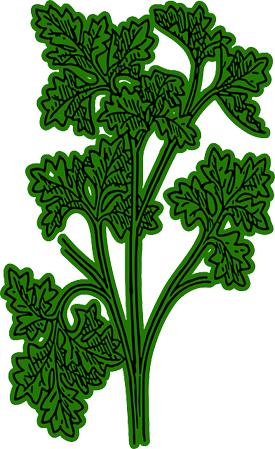
In my opinion, if vegan food is available to me; it is my duty to eat it. Were I in a North country with limited vegetation, would I eat fish or four-legged animals? I would, because it’s my duty to self-sustain; I would give thanks for the animal’s life I used for mine, the way I do with the plants I eat.
A fascinating fact is that Inuits in Greenland have low heart disease. They eat primarily proteins and fats from salmon, whale and seal with no sugars and no carbs. This statistic may come from their Omega-3 to Omega-6 ratio, which is balanced at 1:1, unlike in the West where we are Omega-6 (inflammatory) rich.
CONCLUSION
The habit of eating meat is like any other repetitive pattern we have. When we think about it, we may choose to change it in order to enhance our health, eat in a way that will help stop hunger, be examples of saving water so there will be some left for our grandchildren and modify our ethical actions.
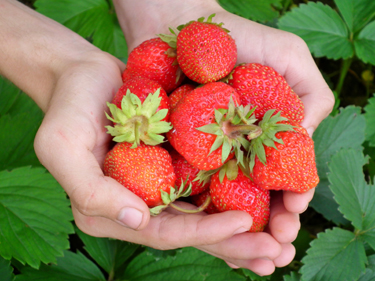 Instead of blindly consuming food, just because it tastes good to us, we might want to consider the consequences of our actions. Not following in the footsteps of the past generations, we might want to evaluate the newest scientific evidence about food and nutrition. We might choose to realize that the dairy and meet industries have vast sums of money to promote the idea of eating meat or consuming dairy. Big media are friends with big dairy, big meat, big poultry and big pharma. These relationships may be cause for us to do our own research on whether the habit of eating meat needs a complete turnaround in 2014.
Instead of blindly consuming food, just because it tastes good to us, we might want to consider the consequences of our actions. Not following in the footsteps of the past generations, we might want to evaluate the newest scientific evidence about food and nutrition. We might choose to realize that the dairy and meet industries have vast sums of money to promote the idea of eating meat or consuming dairy. Big media are friends with big dairy, big meat, big poultry and big pharma. These relationships may be cause for us to do our own research on whether the habit of eating meat needs a complete turnaround in 2014.
ACTION STEPS
Here are several action steps that may serve all of us.
1) Check out the amount of Omega-6 and Omega-3 fatty acids you consume on an average day, shooting for 4 (Omega-6) : 1(Omega-3). The National Institute Of Science recommends a ratio of 10:1 in the United States. In my opinion, that’s because they are friends with agribusiness producers who make vegetable oils, sugars and other foods that imbalance the ratio. Other countries typically say 4:1 is OK, new evidence points to 1:1 being ideal.
2) Research a few hunger statistics, and consider replacing 1 meat meal weekly with a plant-based meal. You can go to the PETA website at http://features.peta2.com/making-the-connection/world-hunger.aspx, about half way down to the slider showing the ratio of elimination of eating animals to the amount of hunger that would go away.
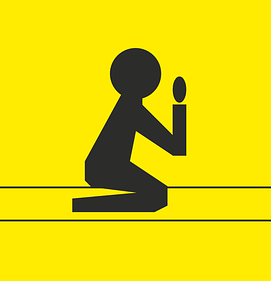 3) Be grateful for whatever food you eat. This will bring positive feelings to the world, which may, in turn, create happier circumstances for all animals and plants, including ourselves.
3) Be grateful for whatever food you eat. This will bring positive feelings to the world, which may, in turn, create happier circumstances for all animals and plants, including ourselves.
____
If you wish to share your story, please hit reply in your email program to be contacted.
___
![]()
FEEDBACK
We value your feedback very much.
Please leave a comment.
Please LIKE us on the website and at WarriorsOfWeight on Facebook.
Thanks.
![]()
DIANE GOLD, AUTHOR
Diane Gold, Founder of Warriors of Weight, Turning Habits Into Health, is a mentor in tai chi, kung fu and meditation, a music, fitness and stress expert, dedicated mom, studying plant-based nutrition and habit change.
She is slowly realizing the importance of early education to impact environment when it comes to animal farming and proper nutrition. She says,
“Teachers have the absolute privilege of connecting the dots for young children to understand the world and how it works. What can be taught now to elementary school children is things like producing meat can use 10 times as much blue water as producing vegetables. And reducing meat consumption can reduce hunger.
“These real-life scenarios can help children to understand what most adults don’t due to lack of connecting the dots: that greed or over-consumption can keep the world out of balance and that a little self-control in each of us can heal the world one hungry child at a time. Our thoughtful actions can also create health in ourselves.
“With this knowledge, the youth, who are the change makers of the world, will be able to take meaningful actions based on seeing the full picture. But, will the education system – walking on tiptoes to maintain its funding – allow such teaching; and will the community – walking on tiptoes so that the major corporations lend a hand to sponsor local projects so local politicians look good – allow the open teaching that is needed? It will require patient work on the part of local educators. But, it’s worth it to educate students about the habit of eating meat and what issues surround it.”
![]()

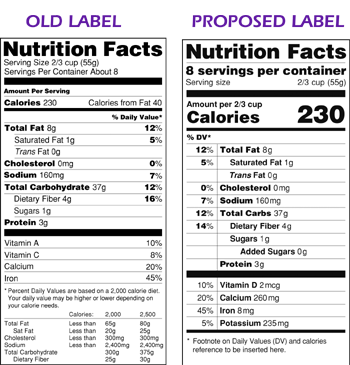 Food labels, the next generation in nutritional data, is being proposed by the Food And Drug Administration. The changes to the nutritional label would help consumers identify food facts more easily, get a more realistic and up-to-date version of what a portion of food in the present day represents and know what sugars in a product are added and not part of the inherent make-up of the food.
Food labels, the next generation in nutritional data, is being proposed by the Food And Drug Administration. The changes to the nutritional label would help consumers identify food facts more easily, get a more realistic and up-to-date version of what a portion of food in the present day represents and know what sugars in a product are added and not part of the inherent make-up of the food.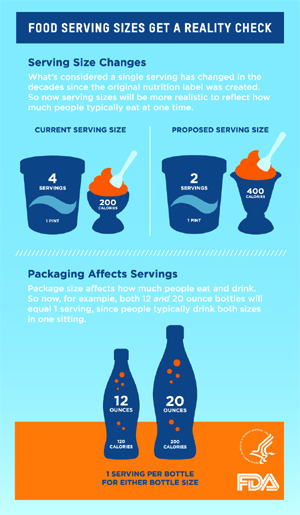 What we used to eat 20 years ago that was listed by FDA as one serving is being recognized as obsolete and totally inaccurate. Due to our larger servings or mislabeling originally, the portion size on the label is being increased. So, if we ate ice cream before the label changes, 1 serving would be 200 calories, half a cup, with 4 servings in the pint.
What we used to eat 20 years ago that was listed by FDA as one serving is being recognized as obsolete and totally inaccurate. Due to our larger servings or mislabeling originally, the portion size on the label is being increased. So, if we ate ice cream before the label changes, 1 serving would be 200 calories, half a cup, with 4 servings in the pint.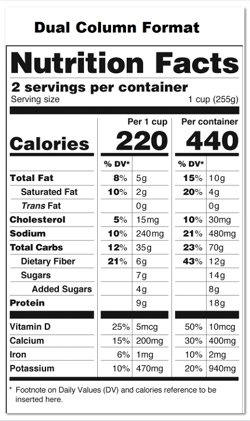 The term cup is helpful because it’s something we can measure. The term container keeps is nebulous since containers range in sizes.
The term cup is helpful because it’s something we can measure. The term container keeps is nebulous since containers range in sizes.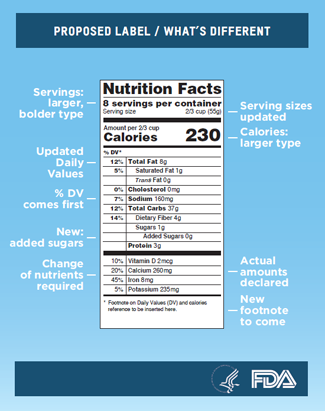
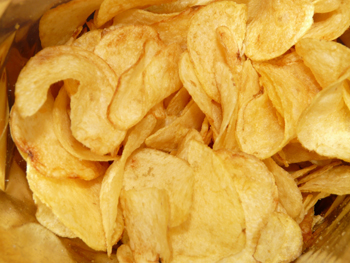 Eating an entire bag of chips, on my part, is possible. It’s similar to my addictive ways with any substance. If I indulge in it once, I will want to indulge again the next day and will have to put forth a concerted effort to replace the potato chip buying behavior with another for, at least, a month, until, if I am lucky, the urge will go dormant again. When I do it, I usually buy baked (reducing the fat grams to 24 greasy grams), since fried will make me feel sick and the craving for grease will require more will power to replace.
Eating an entire bag of chips, on my part, is possible. It’s similar to my addictive ways with any substance. If I indulge in it once, I will want to indulge again the next day and will have to put forth a concerted effort to replace the potato chip buying behavior with another for, at least, a month, until, if I am lucky, the urge will go dormant again. When I do it, I usually buy baked (reducing the fat grams to 24 greasy grams), since fried will make me feel sick and the craving for grease will require more will power to replace.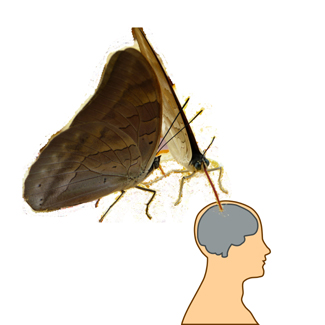
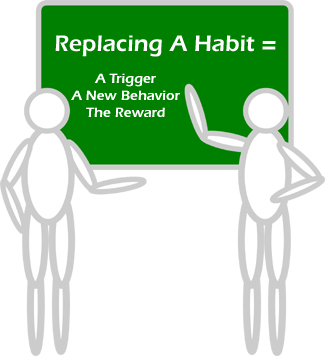 So, here’s this task we have for ourselves. We have a habit, and we want to replace it.
So, here’s this task we have for ourselves. We have a habit, and we want to replace it.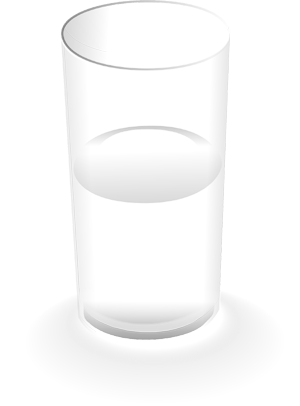 Consider the glass’ being half empty or half full concept. When the glass is full, we think of richness. The empty term, in Western terms, can speak to barrenness, although, in the Eastern way, emptiness is the way to abundance.
Consider the glass’ being half empty or half full concept. When the glass is full, we think of richness. The empty term, in Western terms, can speak to barrenness, although, in the Eastern way, emptiness is the way to abundance.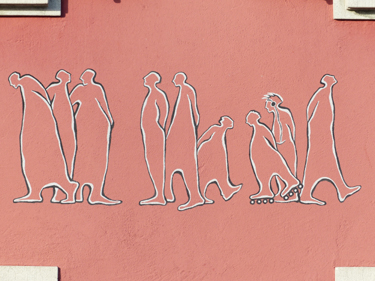 Be careful of the feeling of boredom. It can act as a built-in excuse for doing a certain behavior that is not good for us. We might think that if we had excitement rather than stagnation in our lives, we would not act out the behavior we wanted to change. We might even create the boredom to delude ourselves.
Be careful of the feeling of boredom. It can act as a built-in excuse for doing a certain behavior that is not good for us. We might think that if we had excitement rather than stagnation in our lives, we would not act out the behavior we wanted to change. We might even create the boredom to delude ourselves.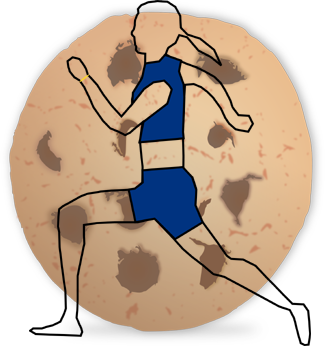 Let’s say we always get the urge to eat dessert. We can change our reaction to this trigger by planning another behavior in its stead, such as going jogging as soon as that urge is felt. This will begin the process of replacement. Repeating this behavior will turn it into a habit. By behaving consistently by jogging and not dessert eating, we will have replaced our old with the new behavior. Although this certainly is quitting acting out the old behavior from the sheer repetition of the act; it’s easier to accomplish by using the concept of “replace.”
Let’s say we always get the urge to eat dessert. We can change our reaction to this trigger by planning another behavior in its stead, such as going jogging as soon as that urge is felt. This will begin the process of replacement. Repeating this behavior will turn it into a habit. By behaving consistently by jogging and not dessert eating, we will have replaced our old with the new behavior. Although this certainly is quitting acting out the old behavior from the sheer repetition of the act; it’s easier to accomplish by using the concept of “replace.”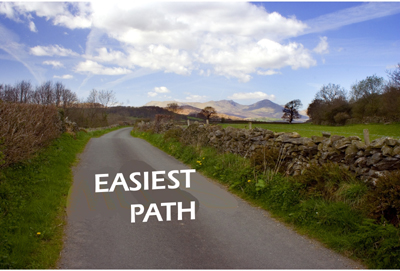 Of course, when we want to do something new in place of some old habit, we want to give ourselves the easiest path to follow. That path involves planning one simple action that will be repeated over and over again. It also requires saying “replace” instead of “quit.”
Of course, when we want to do something new in place of some old habit, we want to give ourselves the easiest path to follow. That path involves planning one simple action that will be repeated over and over again. It also requires saying “replace” instead of “quit.”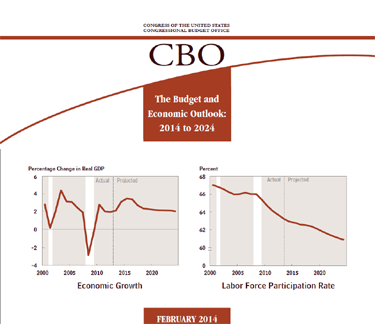 The Health Care Law Is Projected To Shrink The Work Force. This headline looks at full-time workers in an estimate from the Congressional Budget Office. According to Jason Furman, Council Of Economic Advisors Chairman, the change in number of workers has to do more with people’s choosing part-time assignments rather than that employers are deleting jobs to avoid employee’s health insurance costs.
The Health Care Law Is Projected To Shrink The Work Force. This headline looks at full-time workers in an estimate from the Congressional Budget Office. According to Jason Furman, Council Of Economic Advisors Chairman, the change in number of workers has to do more with people’s choosing part-time assignments rather than that employers are deleting jobs to avoid employee’s health insurance costs.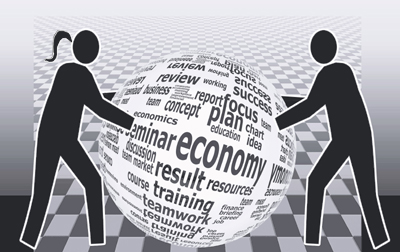 Certainly, we are bound to contribute to humanity in a way that sustains us in some financial way and in order to leave a personal human legacy. We don’t have to get it by having a J-O-B in an environment, where group health care was the only reason we took the job. We can be CRE-8-TIVE and do what we love, which, for most people, is not what they do at their J-O-B. They can be small business owners, putting them in a category to be able to pay for themselves, but out of the headlined category: full-time W-2 worker, about whom the CBO is estimating.
Certainly, we are bound to contribute to humanity in a way that sustains us in some financial way and in order to leave a personal human legacy. We don’t have to get it by having a J-O-B in an environment, where group health care was the only reason we took the job. We can be CRE-8-TIVE and do what we love, which, for most people, is not what they do at their J-O-B. They can be small business owners, putting them in a category to be able to pay for themselves, but out of the headlined category: full-time W-2 worker, about whom the CBO is estimating. There is so much creative energy that we all possess that is channeled by some into entrepreneurship. The people in this division make some of the breakthroughs that make our country great and make us happy Americans. We are thriving spiritually because of choices like entrepreneurship. Yes, there are just as many, if not more people who have that same spark of invention who don’t make a living at it and struggle. But they deserve the time to keep working at it.
There is so much creative energy that we all possess that is channeled by some into entrepreneurship. The people in this division make some of the breakthroughs that make our country great and make us happy Americans. We are thriving spiritually because of choices like entrepreneurship. Yes, there are just as many, if not more people who have that same spark of invention who don’t make a living at it and struggle. But they deserve the time to keep working at it. It’s fair to say that what keeps us happy and healthy is our own personal foundation. When we have a belief system or a set of ethics by which we live; this drives us to do act the way we do and make the decisions that we do.
It’s fair to say that what keeps us happy and healthy is our own personal foundation. When we have a belief system or a set of ethics by which we live; this drives us to do act the way we do and make the decisions that we do.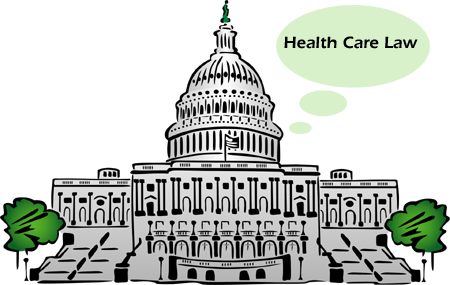 The Health Care Law aka The Affordable Care Act aka Obamacare is part of the legacy of Barack Obama, 44th President of the United States. It allows for people previously uninsurable due to health issues to be insurable. It allows for people who could not afford health insurance to be subsidized enough to get it.
The Health Care Law aka The Affordable Care Act aka Obamacare is part of the legacy of Barack Obama, 44th President of the United States. It allows for people previously uninsurable due to health issues to be insurable. It allows for people who could not afford health insurance to be subsidized enough to get it.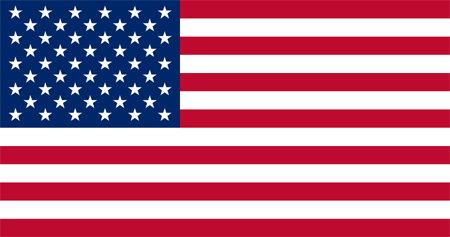 Finally, it seems as if freedom of choice is the reason for the shrinking employee headline. We’re all different. There’s no one way to be. And, through the ACA, the United States has just happily extended our freedom.
Finally, it seems as if freedom of choice is the reason for the shrinking employee headline. We’re all different. There’s no one way to be. And, through the ACA, the United States has just happily extended our freedom. We develop habits based on how certain actions make us feel. Whether we wear designer clothes, keep our hair immaculate or stay fit because we enjoy people’s staring at us; we act out behaviors regularly to achieve these good feelings, aka rewards. The cue, which is the original feeling that makes us do a behavior urges us to work so we have access to buy clothing, get our hair done, so we look how we like. This urge also pushes us to work out so that our bodies look good, which gives us the end result: the reward of having people acknowledge our beauty. Appearance
We develop habits based on how certain actions make us feel. Whether we wear designer clothes, keep our hair immaculate or stay fit because we enjoy people’s staring at us; we act out behaviors regularly to achieve these good feelings, aka rewards. The cue, which is the original feeling that makes us do a behavior urges us to work so we have access to buy clothing, get our hair done, so we look how we like. This urge also pushes us to work out so that our bodies look good, which gives us the end result: the reward of having people acknowledge our beauty. Appearance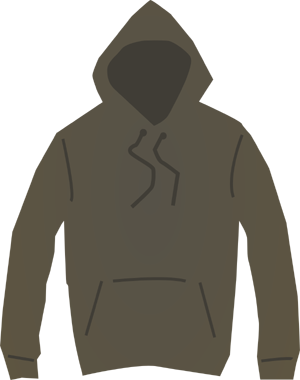 These are only examples of appearance habits we may have. There are others of us who specifically wear clothing to make us invisible, since we don’t like it when people stare. And there are others of us who do not consider what people think; they are busy with their own lives and work.
These are only examples of appearance habits we may have. There are others of us who specifically wear clothing to make us invisible, since we don’t like it when people stare. And there are others of us who do not consider what people think; they are busy with their own lives and work.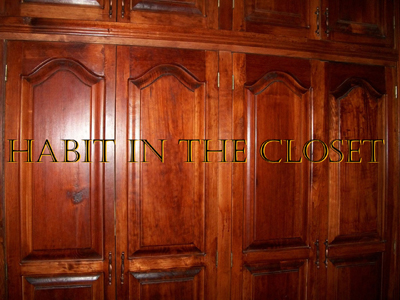 When we choose to change one of our habits, we replace the habit that was there with a new one. The old one is still there, but it is a “habit in the closet,” so to speak. As long as we are doing a new behavior and not opening the closet, the habit will stay put. For as long as we choose. Habit In The Closet
When we choose to change one of our habits, we replace the habit that was there with a new one. The old one is still there, but it is a “habit in the closet,” so to speak. As long as we are doing a new behavior and not opening the closet, the habit will stay put. For as long as we choose. Habit In The Closet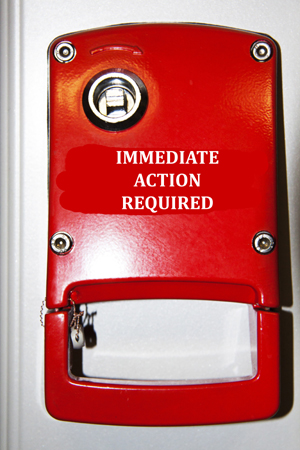
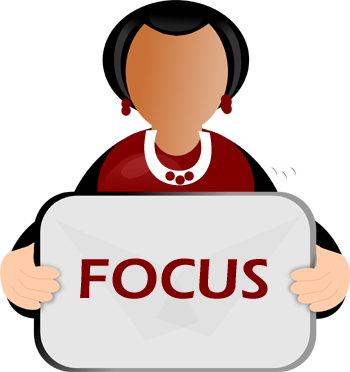
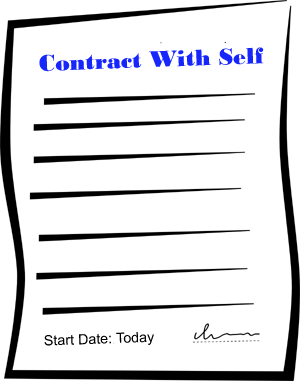 1)
1)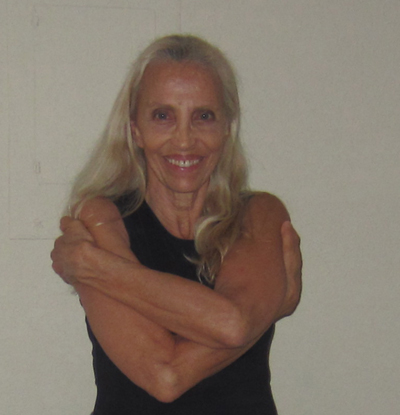
 It is always a good idea to trust, to believe the next person, give credence to what we read, being astute when credentialing who’s saying what and knowing what authors are attached to an agenda other than truth is present.
It is always a good idea to trust, to believe the next person, give credence to what we read, being astute when credentialing who’s saying what and knowing what authors are attached to an agenda other than truth is present. Evidence-based medicine is the use of proof or high quality information and research in medicine, the science of prevention, diagnosis and treatment of a disorder of function, often called disease. Factual testing is used to assess benefits and risks of specific treatments prescribed by learned people in the medical field. How many times does one academic support another’s study, body of work, thesis – even overlooking its controversy – for the primary purpose of getting support back, be it money or editorial byline?
Evidence-based medicine is the use of proof or high quality information and research in medicine, the science of prevention, diagnosis and treatment of a disorder of function, often called disease. Factual testing is used to assess benefits and risks of specific treatments prescribed by learned people in the medical field. How many times does one academic support another’s study, body of work, thesis – even overlooking its controversy – for the primary purpose of getting support back, be it money or editorial byline? We, especially in the Western World, but common everywhere, have developed the habit of believing that, if a clinical trial has taken place, if a certified doctor has uttered it, if a governmental agency assigned to evaluate and cure illness has said it, if our pharmaceutical companies claim it (since they are so very regulated by the FDA and other government agencies), if it’s published in a medical journal; the information publicized from this event must be ethical, honest, conscientious, and, most of all, clinically based. This is a strong habit that we have been repeating since we were young, having been taught to trust doctors, nurses and other medical personnel as well products from the wonder drug companies whose breakthrough can cure disease.
We, especially in the Western World, but common everywhere, have developed the habit of believing that, if a clinical trial has taken place, if a certified doctor has uttered it, if a governmental agency assigned to evaluate and cure illness has said it, if our pharmaceutical companies claim it (since they are so very regulated by the FDA and other government agencies), if it’s published in a medical journal; the information publicized from this event must be ethical, honest, conscientious, and, most of all, clinically based. This is a strong habit that we have been repeating since we were young, having been taught to trust doctors, nurses and other medical personnel as well products from the wonder drug companies whose breakthrough can cure disease.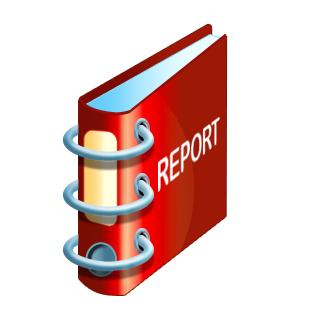 Medical professionals incorporate information of the latest experiments and trials along with their own research, college research and academic experience to make decisions.
Medical professionals incorporate information of the latest experiments and trials along with their own research, college research and academic experience to make decisions. 7) From pharmaceutical representatives, whose companies often times are the sponsors and controllers of the clinical trials and the data published.
7) From pharmaceutical representatives, whose companies often times are the sponsors and controllers of the clinical trials and the data published.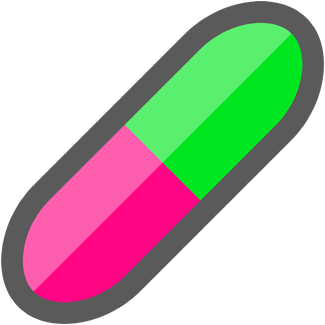 Of course, it is possible to hear about a one-shot treatment occurrence that absolutely saved a patient’s life that was paid for by a company or whose marketing is the reason we heard about it. And, if we are this patient, we are thankful and ecstatic and swear by this one single, random, non-duplicable effort because it saved us and we live. This is a dangerous way to get information, though.
Of course, it is possible to hear about a one-shot treatment occurrence that absolutely saved a patient’s life that was paid for by a company or whose marketing is the reason we heard about it. And, if we are this patient, we are thankful and ecstatic and swear by this one single, random, non-duplicable effort because it saved us and we live. This is a dangerous way to get information, though. We come back to trust, which, as we’ve said, is good. As long as we add in all the factors that can bias evidence, we can evaluate whether the results of the evidence-based medicine we so cherish have any basis in profit or furthering political careers or paving the way for employment at a pharmaceutical company.
We come back to trust, which, as we’ve said, is good. As long as we add in all the factors that can bias evidence, we can evaluate whether the results of the evidence-based medicine we so cherish have any basis in profit or furthering political careers or paving the way for employment at a pharmaceutical company.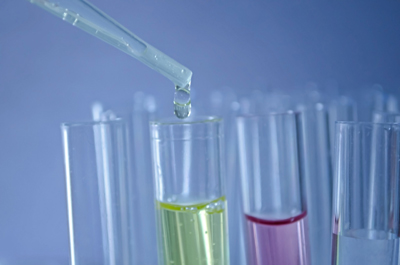 There is lots of medical research both in academia and in companies in the pharmaceutical industry, from medical student projects, from already working doctors and medical professionals that is outstanding, amazing, monumental, life changing, life saving, cooperatively integrated with every other discipline that exists, evidence-based for real with no prejudice based on agenda that is the pure truth. Our arms go out to you in thanks, praise and commendation. Keep up the great work. We are counting on you.
There is lots of medical research both in academia and in companies in the pharmaceutical industry, from medical student projects, from already working doctors and medical professionals that is outstanding, amazing, monumental, life changing, life saving, cooperatively integrated with every other discipline that exists, evidence-based for real with no prejudice based on agenda that is the pure truth. Our arms go out to you in thanks, praise and commendation. Keep up the great work. We are counting on you.
 We would think that healthy eating in the United States is easy and that we are at the top of the charts when compared to other countries.
We would think that healthy eating in the United States is easy and that we are at the top of the charts when compared to other countries.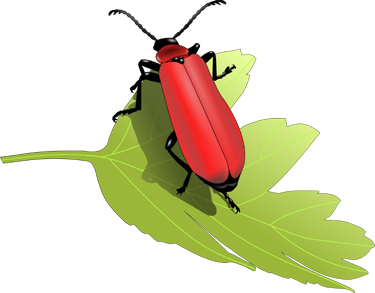 Farmers use some method of offsetting bugs and weeds on their crop. Many use toxic pesticides which change the basic structure of the fruit or vegetable being grown or add some new chemical structure to the plant by pesticide exposure. This makes the food less healthy.
Farmers use some method of offsetting bugs and weeds on their crop. Many use toxic pesticides which change the basic structure of the fruit or vegetable being grown or add some new chemical structure to the plant by pesticide exposure. This makes the food less healthy.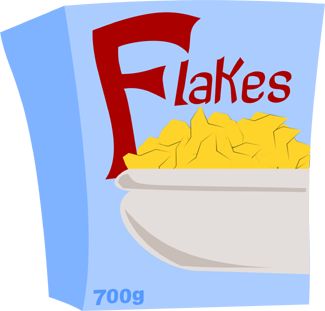 More packaged food than not is in our supermarkets. We use corn and soy, most of it genetically engineered (GE), and sugar, half of it GE, to create fast food with lovely colors. Instead of selling snacks that are fresh food, we buy boxes or bags with ingredients we can’t pronounce. Older generations did it, meaning our parents or grandparents; so why shouldn’t we?
More packaged food than not is in our supermarkets. We use corn and soy, most of it genetically engineered (GE), and sugar, half of it GE, to create fast food with lovely colors. Instead of selling snacks that are fresh food, we buy boxes or bags with ingredients we can’t pronounce. Older generations did it, meaning our parents or grandparents; so why shouldn’t we? We are pleasure seekers and taste mongers with our taste buds being bombarded with new combos of flavor. We will do anything for the next delight, whether it be food, body sensation, exercise, drink, color, gadget. What this means with food is that, even though we know that healthy food is crucial, we choose to eat highly fatty, salty, oily foods that taste unbelievably good. And we have developed the habit of eating portions that are much too large, just because we have developed the habit by being served too much in a restaurant or at home.
We are pleasure seekers and taste mongers with our taste buds being bombarded with new combos of flavor. We will do anything for the next delight, whether it be food, body sensation, exercise, drink, color, gadget. What this means with food is that, even though we know that healthy food is crucial, we choose to eat highly fatty, salty, oily foods that taste unbelievably good. And we have developed the habit of eating portions that are much too large, just because we have developed the habit by being served too much in a restaurant or at home.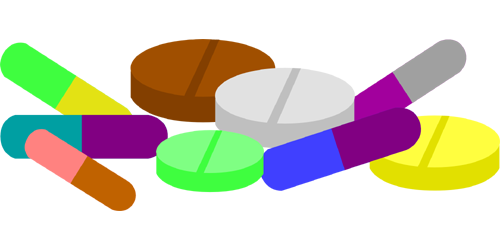 Antibiotics do not work against viruses. They also strip the body of the microbiomes needed on an hourly basis in the human digestive tract. A study at Washington University School of Medicine, St. Louis, Mo., published in Pediatrics in 2012, swabbed the nasal passages of young children with unexplained fever and, for control, children without fever. Those with fever had 5 X the viral load of those without. The study’s objective was to to determine whether a quick nasal swab could improve the mistaken prescribing of antibiotics for viral sickness, which always harms microbial balance. The jury is still out, in my opinion, for 2 reasons: the antibiotic industry is massively profitable and there are some very nasty bacteria that can kill the patient if antibiotics are not given in time.
Antibiotics do not work against viruses. They also strip the body of the microbiomes needed on an hourly basis in the human digestive tract. A study at Washington University School of Medicine, St. Louis, Mo., published in Pediatrics in 2012, swabbed the nasal passages of young children with unexplained fever and, for control, children without fever. Those with fever had 5 X the viral load of those without. The study’s objective was to to determine whether a quick nasal swab could improve the mistaken prescribing of antibiotics for viral sickness, which always harms microbial balance. The jury is still out, in my opinion, for 2 reasons: the antibiotic industry is massively profitable and there are some very nasty bacteria that can kill the patient if antibiotics are not given in time. How long is the nutrition course in our schools? What? There isn’t one, or there was that one day when Chelsie’s mom, the chef, came in? We learn how to read, how to write, how to add and subtract numbers so that we can go to the bank and shop, but is there an ongoing course to teach us how to sustain our health through food or teach us what to buy based on budget?
How long is the nutrition course in our schools? What? There isn’t one, or there was that one day when Chelsie’s mom, the chef, came in? We learn how to read, how to write, how to add and subtract numbers so that we can go to the bank and shop, but is there an ongoing course to teach us how to sustain our health through food or teach us what to buy based on budget?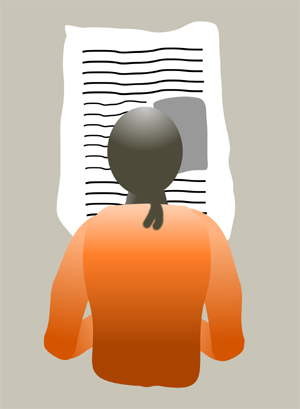 1)
1)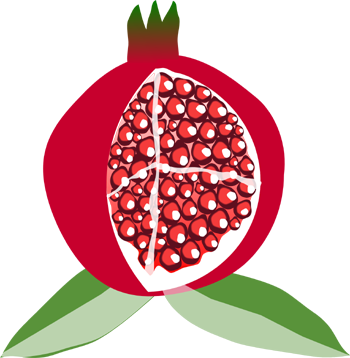
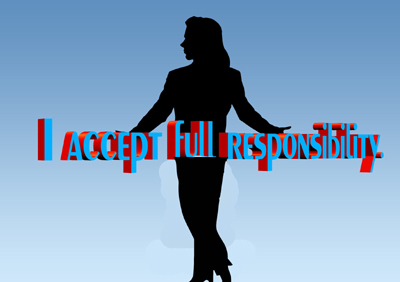 In the previous article in this series (June 24, 2013), I mentioned I was still looking for a primary care provider. I have found her. It is I, an unlicensed, non-medical person who knows a lot about nutrition and mind, body, spirit fitness. So far, I care the more about my own care than anyone I have found; I don’t treat myself like just another chart; I know the details of my case without having to look at a chart which is brief, at best; I have done research on nutrition and fitness and body processes and interactions that no medical personnel I know has done.
In the previous article in this series (June 24, 2013), I mentioned I was still looking for a primary care provider. I have found her. It is I, an unlicensed, non-medical person who knows a lot about nutrition and mind, body, spirit fitness. So far, I care the more about my own care than anyone I have found; I don’t treat myself like just another chart; I know the details of my case without having to look at a chart which is brief, at best; I have done research on nutrition and fitness and body processes and interactions that no medical personnel I know has done. Although I am looking forward to the day when all medical professionals offer electronic consults, the telehealth-telemedicine industry is already having us form a new habit, should we choose to accept what it is pushing. Their business model saves provider overhead, saves the government emergency visit costs for patients who get government subsidies, but the patient pays the same as before. As are many infrastructures, this one is abusive.
Although I am looking forward to the day when all medical professionals offer electronic consults, the telehealth-telemedicine industry is already having us form a new habit, should we choose to accept what it is pushing. Their business model saves provider overhead, saves the government emergency visit costs for patients who get government subsidies, but the patient pays the same as before. As are many infrastructures, this one is abusive.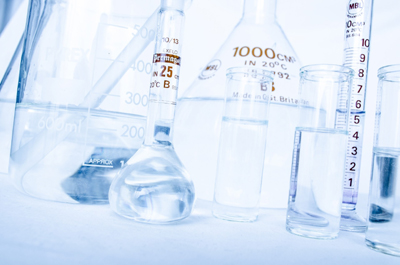 Does your doctor work for a pharmaceutical company? Did you know that some are commissioned to recruit patients for a new drug, getting paid per each head brought to the study? They are also trained to educate other doctors about the possible benefits of the drug so that other doctors will recruit patients to take the drug. Don’t know for sure, but I suspect that the educating doctor gets a cut of the stipend that every other doctor gets for bringing patients to the study. If this is the structure, it is multi-level marketing which I firmly believe in. But, in medicine, might there be agendas pushing prescribing techniques?
Does your doctor work for a pharmaceutical company? Did you know that some are commissioned to recruit patients for a new drug, getting paid per each head brought to the study? They are also trained to educate other doctors about the possible benefits of the drug so that other doctors will recruit patients to take the drug. Don’t know for sure, but I suspect that the educating doctor gets a cut of the stipend that every other doctor gets for bringing patients to the study. If this is the structure, it is multi-level marketing which I firmly believe in. But, in medicine, might there be agendas pushing prescribing techniques?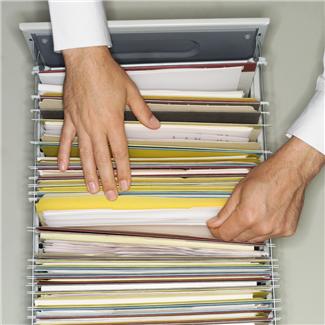 Doctors and health professionals only get to see a summary of abstracts or the full abstract if they pay for a medical journal subscription that houses the abstract. The abstract is some editor’s summation of facts which may not reflect study results. How weird that drug study results are not open to patients. We’re the ones who have to decide to take them or not. These data are also not open to doctors. Should we just say,
Doctors and health professionals only get to see a summary of abstracts or the full abstract if they pay for a medical journal subscription that houses the abstract. The abstract is some editor’s summation of facts which may not reflect study results. How weird that drug study results are not open to patients. We’re the ones who have to decide to take them or not. These data are also not open to doctors. Should we just say, 7a)
7a) If you have no insurance, ask the provider’s office person for what you will be responsible if you have a routine visit, an x-ray, anything else commonly done in your type of provider’s office. Of course, the office person will say s/he won’t know until afterwards. At this point, mention that you are asking for the cost for an office visit and 3 x-rays. If you don’t have the x-rays, you can deduct that amount. Also, if you have no insurance, request of the office personnel that they request of the provider to be permitted to pay the allowed amount paid by people on an in-network insurance plan. Sometimes, they will have mercy. But, if you don’t ask, you’ll never know.
If you have no insurance, ask the provider’s office person for what you will be responsible if you have a routine visit, an x-ray, anything else commonly done in your type of provider’s office. Of course, the office person will say s/he won’t know until afterwards. At this point, mention that you are asking for the cost for an office visit and 3 x-rays. If you don’t have the x-rays, you can deduct that amount. Also, if you have no insurance, request of the office personnel that they request of the provider to be permitted to pay the allowed amount paid by people on an in-network insurance plan. Sometimes, they will have mercy. But, if you don’t ask, you’ll never know.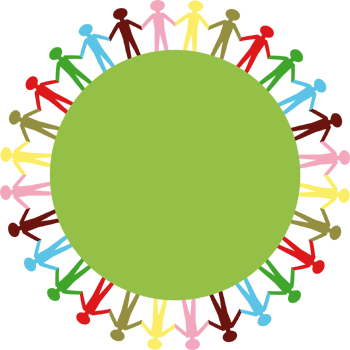
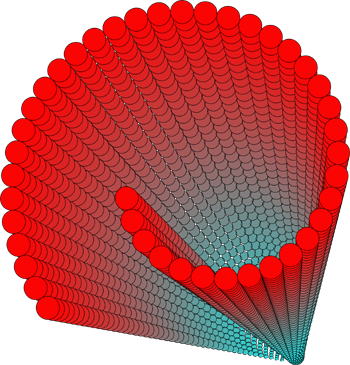
 Another type of personal development fortifies us by our absorption of the very method we are studying. Tai chi, the other martial arts, free dance, meditation, yoga are disciplines in this mind-body arts category. Music, visual art, poetry are in the creative arts category. By studying any of these methods, we consume a system of learning. This system develops who we are. This development fortifies the world.
Another type of personal development fortifies us by our absorption of the very method we are studying. Tai chi, the other martial arts, free dance, meditation, yoga are disciplines in this mind-body arts category. Music, visual art, poetry are in the creative arts category. By studying any of these methods, we consume a system of learning. This system develops who we are. This development fortifies the world.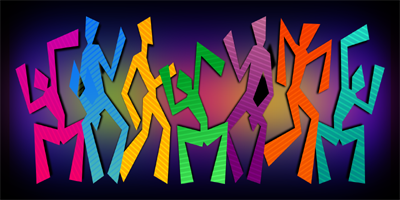 I had the pleasure of attending a 5-Rhythms’ dance session on Friday, January 3, led by Amber Ryan, in Miami. The purpose of the session was to spread goodness, to cleanse the body, mind and spirit and resonate with learning about ourselves. The ultimate goal was use the dance method (which is a method of doing your own steps with a little bit of guidance) to shake off all our own personal garbage so that we could let our own inherent love shine through.
I had the pleasure of attending a 5-Rhythms’ dance session on Friday, January 3, led by Amber Ryan, in Miami. The purpose of the session was to spread goodness, to cleanse the body, mind and spirit and resonate with learning about ourselves. The ultimate goal was use the dance method (which is a method of doing your own steps with a little bit of guidance) to shake off all our own personal garbage so that we could let our own inherent love shine through.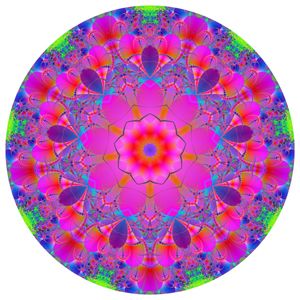 I was very involved in the dance. But the word love came up several times. One of the other partners in the event kept expressing how she felt “so much love;” whether this was inside herself or from the group, I will not speculate. Although I could speculate because I felt some kind of love-y feeling inside, radiating out to the group and back to me. Nothing ethereal, I was heated from dancing. I was happy from releasing the tension in my body through dancing. I was dancing with others, one of my favorite activities. And I was socializing with people who had nothing, at that moment, to prove.
I was very involved in the dance. But the word love came up several times. One of the other partners in the event kept expressing how she felt “so much love;” whether this was inside herself or from the group, I will not speculate. Although I could speculate because I felt some kind of love-y feeling inside, radiating out to the group and back to me. Nothing ethereal, I was heated from dancing. I was happy from releasing the tension in my body through dancing. I was dancing with others, one of my favorite activities. And I was socializing with people who had nothing, at that moment, to prove. We know that personal development is individualistic, but individuals make up the world. We know that if we develop ourselves through certain disciplines, we will become spiritually rich humans and contribute good acts in the world.
We know that personal development is individualistic, but individuals make up the world. We know that if we develop ourselves through certain disciplines, we will become spiritually rich humans and contribute good acts in the world. 1)
1)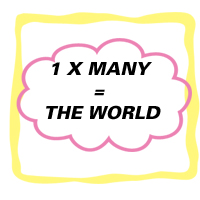

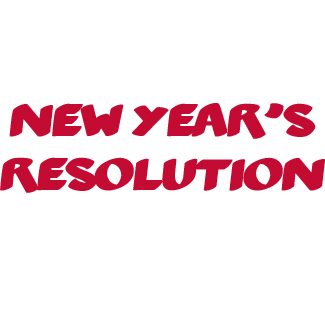
 We, as humans, have a variety of requirements. To be at our best, we need a balanced infrastructure to support us. The simple version of this concept is that we need great nutrition, a little exercise, a way to be creative, love and companionship, daily relaxation, enough rest and a place to do this in. Each of us has a little bit different make-up and needs more or less in each of these areas, depending upon who we are.
We, as humans, have a variety of requirements. To be at our best, we need a balanced infrastructure to support us. The simple version of this concept is that we need great nutrition, a little exercise, a way to be creative, love and companionship, daily relaxation, enough rest and a place to do this in. Each of us has a little bit different make-up and needs more or less in each of these areas, depending upon who we are.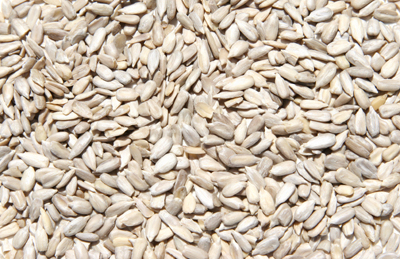
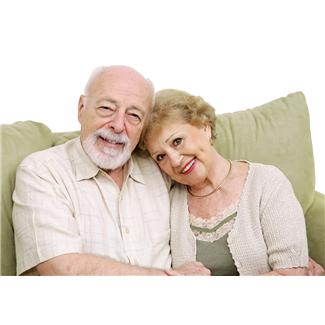
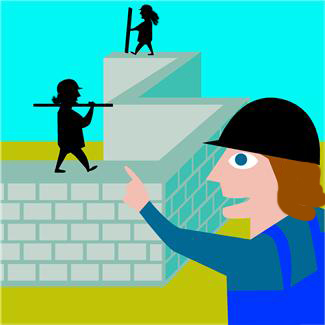


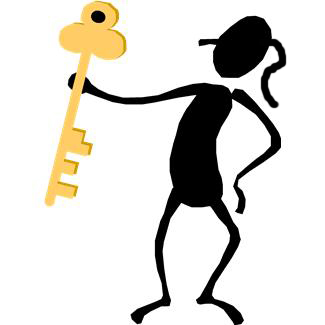 To succeed at our New Year’s Resolution Habit Change, repetition is key. Whatever our new behavior, it must be repeated for a good 3-week period as a humble beginning. I just read an article saying how 21 days to change a habit is a myth, and 66 days is more realistic. If you’re like me, it can take 90-180 days to take hold, and repetition is still necessary on a daily basis after that.
To succeed at our New Year’s Resolution Habit Change, repetition is key. Whatever our new behavior, it must be repeated for a good 3-week period as a humble beginning. I just read an article saying how 21 days to change a habit is a myth, and 66 days is more realistic. If you’re like me, it can take 90-180 days to take hold, and repetition is still necessary on a daily basis after that.